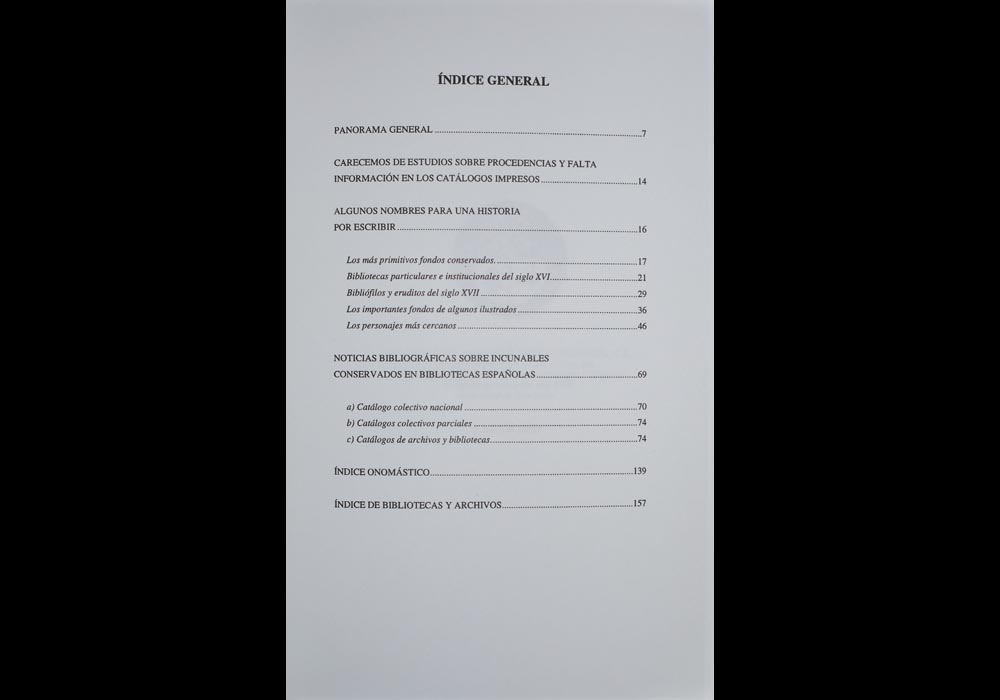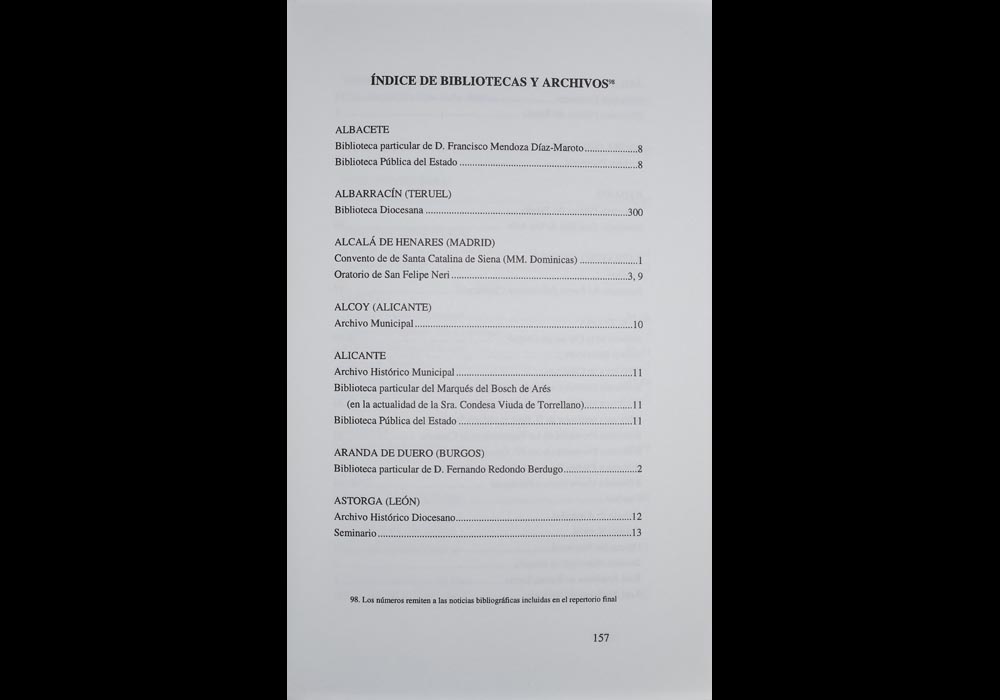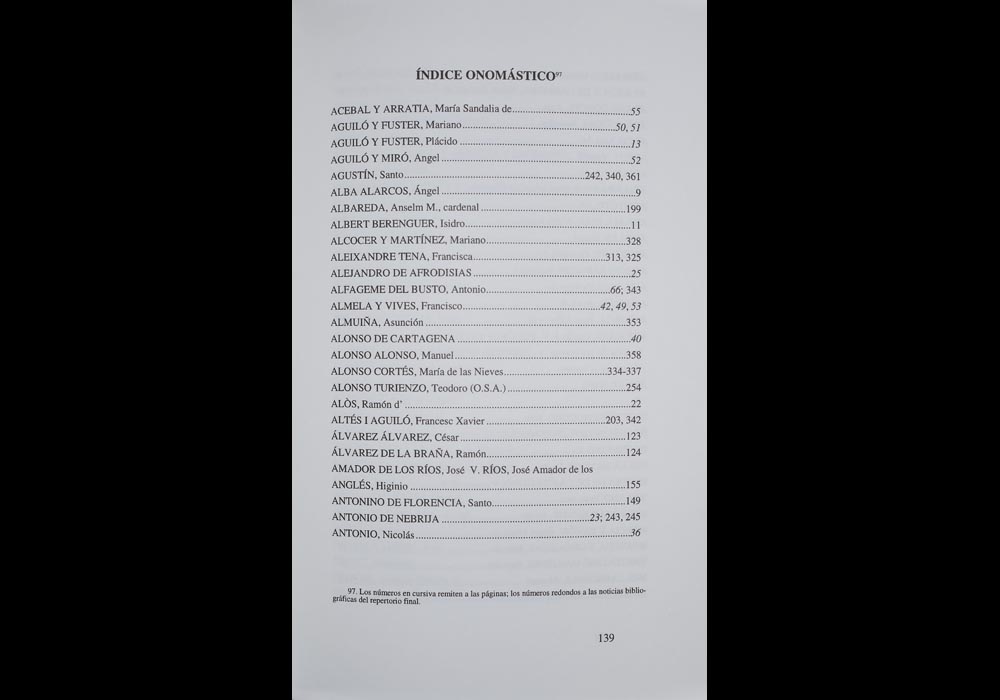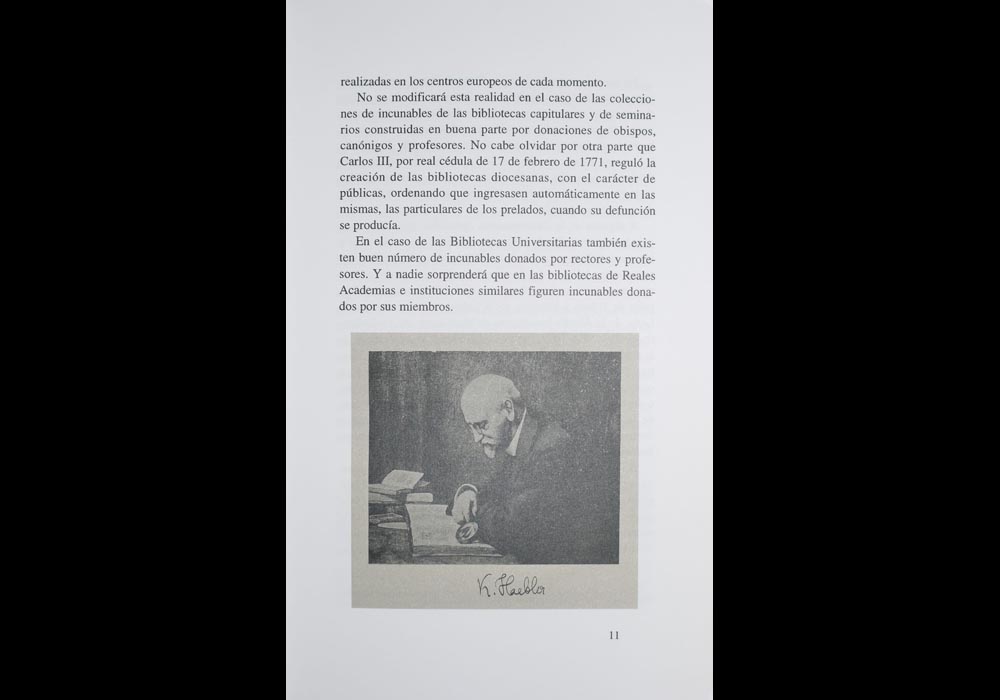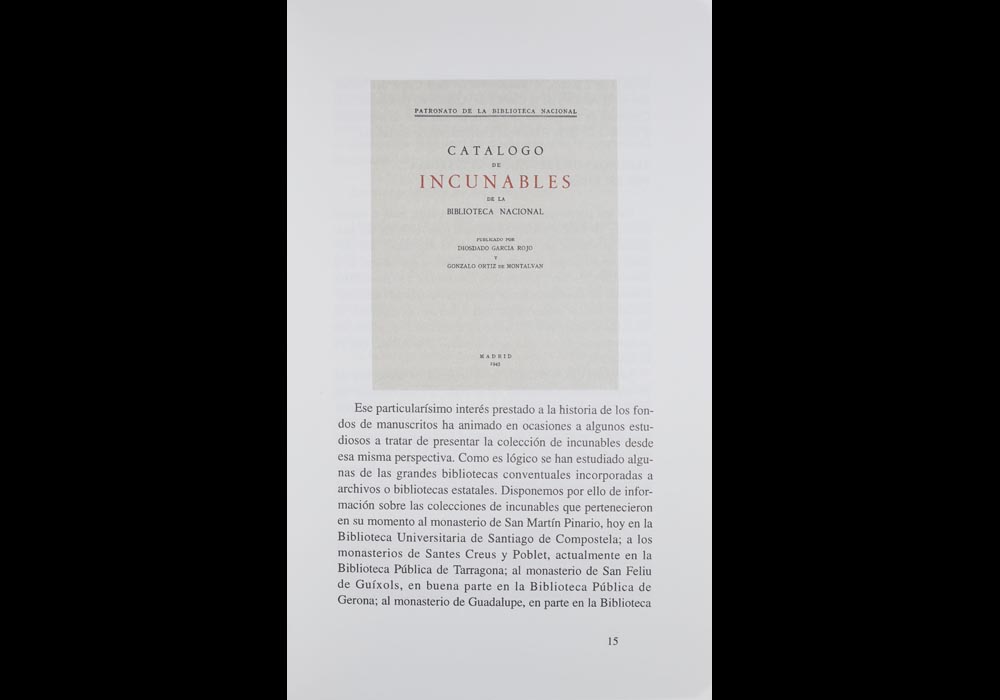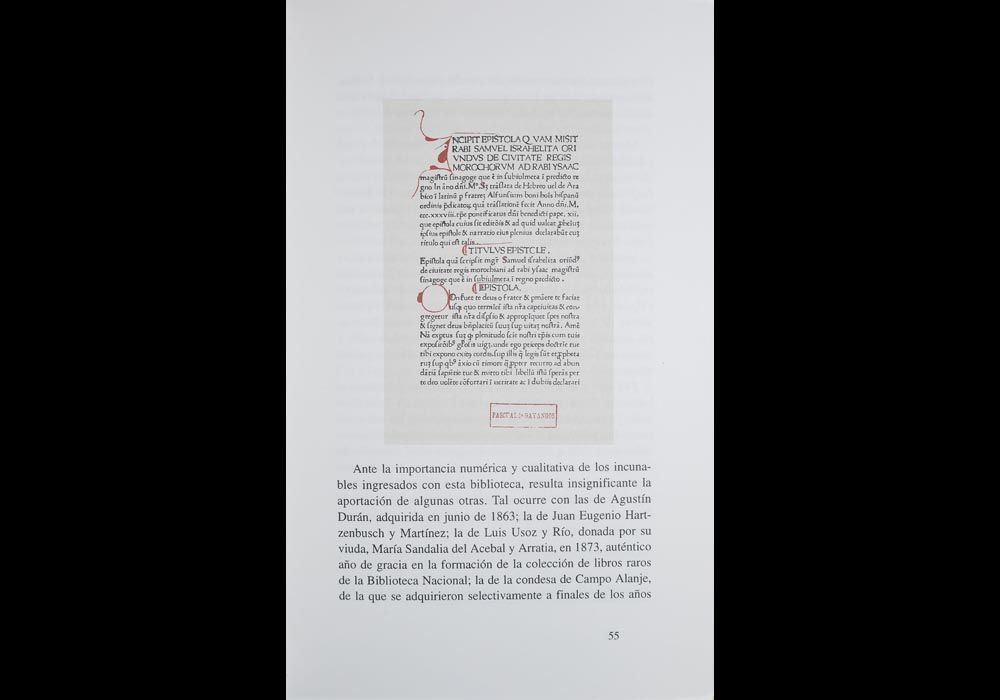|
Synopsis:
A question asked repeatedly by researchers of librarians of antique collections refers to the source of the examples they study. Why are certain copies of editions of the first printing century to be found in Spain and why in this or that library? In this book a good number of answers are provided to this frequent question, presenting the institutional and private libraries which have allowed the national collection to be formed over the centuries.
This sensible account features the Doctor of Law, Alonso Cota, burnt at the stake by the Inquisition, in Toledo, in 1486; the Bishop of Segovia Juan Arias Dávila; "el Pinciano" or the man from Valladolid; Cardinal Cisneros; Hernando Colón; Archbishop Juan Ribera; Diego Sarmiento de Acuña, Count of Gondomar; Viceroy Pedro Antonio de Aragón; the erudite and diplomat Pablo Ignacio de Dalmases y Ros; the historian Enrique Flórez; the Canon Foguet; Fernando José de Velasco y Caballos, lawyer of the Castilian Chamber; Manuel de Roda y Arrieta; Gregorio Mayans y Siscar; Francisco Pérez Bayer; Jacobo María de Parga y Puga; Eduardo Fernández San Román Ruiz; José Enrique Serrano y Morales; Mariano Aguiló y Fuster; Pascual de Gayangos; the Count of Ayamans; the Marquess of San Juan de Piedras Albas; Pablo Font de Rubinat; José Lázaro Galdiano; Santiago Espona y Brunet; the Alfageme-Fontanals y Massó families; and so on.
The volume is rounded off with a bibliographic approach to Spanish incunabula collections. The author is Doctor of Hispanic Philology and Head of the Department of Incunabula and Rare Manuscripts of the Biblioteca Nacional de Madrid. In Spanish.
|
|




